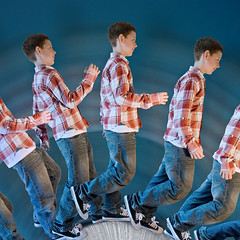
Got this email from one of our awesome first grade teachers this morning and I wanted to spend some time thinking about it:
What a great question! So, how do you teach visual literacy. Better yet, how do you help students discern, make judgments, and create meaning from visual material? How do you teach students that images not only convey meaning, but that they also create meaning in a similar way that text helps create meaning for its reader?"I have some photographers who will take a billion pictures of what they think is important. That’s not a big deal… When I asked them which pictures we need to keep, they truly think all of them… and they don’t. Do you have some suggestions/parameters which might help them to decide what they think is a “good” picture or what they think is “best”?"
Here are some of my initial thoughts:
1. I wonder if a conversation needs to happen with the students about what an "important" picture is? Could that be causing the randomness of the image taking? That could very well be the case, but every good photographer knows that the best images happen in the moment and are not staged. So how do you separate the wheat from the chaff? The issue could also be that students frankly just don't want to delete anything they've done. They are so excited to have created something that they don't want to think about what to give up; they want to keep them ALL for posterity.
2. Teachers should reinforce with students the idea that images tell a story. If students can identify the "story" behind an image, they are on their way determining its potential place in and among the other "stories" in a group. Only when students begin to see that some images fit better than others will they be willing to pick and choose. The Tell a story in 5 frames Flickr image group comes to mind when thinking about this.
3. Images can be combined to convey a message in a broader context. While each image in itself can create meaning for students, putting pictures together in a sequence also create a larger "big picture" idea. Now this process can go both ways! Students can either start with the big idea and create images that support or tell the story, or they can make a judgement about what the "big picture" is based a given set of images. One is obviously more subjective than the other, but if students can come to a big picture understanding of the images, maybe we can help them re-evaluate their choices. This may very well need to be caught through aggressive modeling more than taught?

4. Along the lines of images telling a story, would be the students ability to put events in sequential order. If the bulk images can't be put in order in which the "story" of the day happens, then they shouldn't be kept. This is a skill that most early childhood and elementary teachers work on with their students. Can you use similar teaching strategies in making the transition from text to images? When students can identify the beginning, middle, and end of literature, I would think that would also be the foundation for helping students discriminate sequences in images as well; as long as images are thought of as meaningful and not just "pretty" things to look at. ECE teachers are already doing this with emergent readers anyway. Emergent readers are constantly connecting pictures to text for the purpose of helping them create meaning. Why couldn't teachers build on this process?
It would be interesting to see if research could provide a link between traditional literacy sequencing skills and the discrimination of meaning from images. What are the preparatory skills needed for students to effectively make subjective decisions about the meaning derived from images? Are both both visual and text literacy two sides of the same coin?
So is "visual literacy" really a NEW literacy or are digital photography and the Internet just amplifying something that has always been important?
Image: "Small DSLR" by Flickr user: jonr. Used under an Attribution-NonCommercial-ShareAlike 2.0 CreativeCommons License
Image: "life.turns.clockwise #1" by Flickr user: delphwynd. Used under an Attribution-NonCommercial-ShareAlike 2.0 CreativeCommons License




1 comment:
Along the lines of this conversation, you could also consider conversations about using graphic organizers and the emergence of infographics on the web as a way of presenting topical information.
Post a Comment